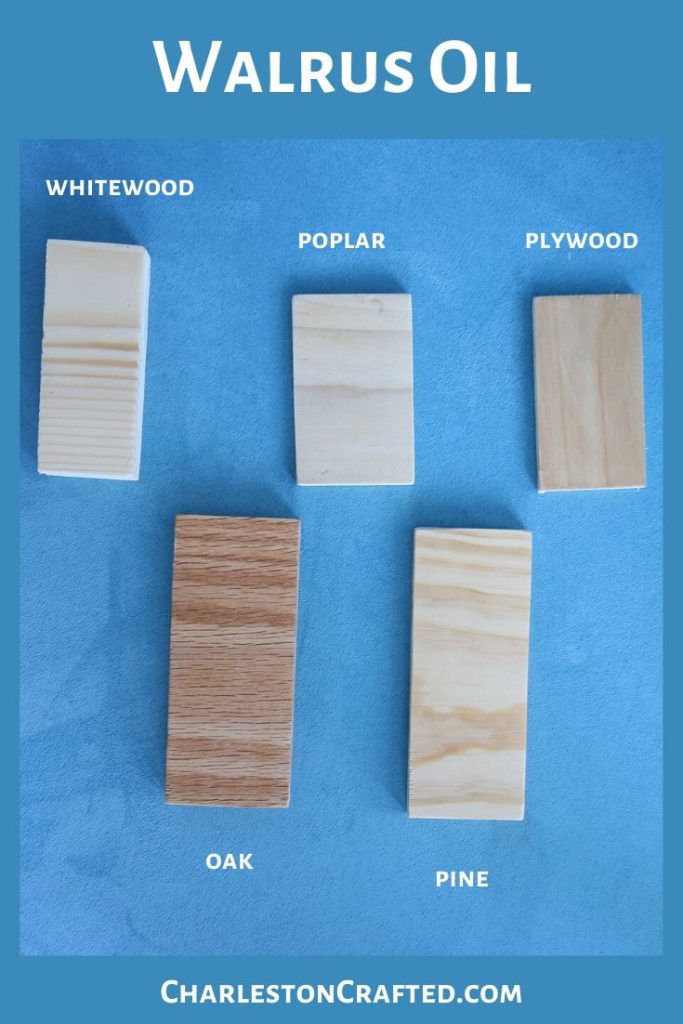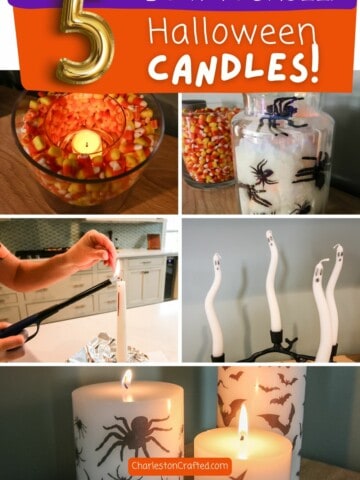Considering staining a project with Walrus Oil? Did you know that Walrus Oil looks different on every wood species? That should be a big factor before you buy the oil or wood.
Here is everything you need to know about it, before making the purchase.
Walrus Oil Cutting Board Oil
OK OK I know that this series is all about wood stains. And Walrus Oil isn't a stain - it's an oil. But, we love it so much, I had to include it in the test.
Walrus Oil is actually a butcher block cutting board oil. So, it is food-safe and FDA compliant.
Walrus oil has a semi-glossy smooth finish.
Walrus Oil isn't colored - it is a clear stain that merely enhances the wood surface that you apply it to.
A lot of cheaper woods you might want to cover up or add color to. If that's the case - this is not what you want.
However, if you are looking for wood finishes to simply complement and enhance the grain of beautiful wood, this is your oil.
We use Walrus Oil whenever we build anything with "nice" wood.
Another great option for maintaining natural looking wood is Beeswax Furniture polish!
To apply Walrus Oil:
- Wipe your project clean. It should be sanded smooth and otherwise finished.
- Apply thin lay of Walrus Oil Cutting Board Oil to all surfaces.
- Allow 12 to 24 hours to dry.
- Wipe away excess oil (if there is any).
You can find this oil on Amazon or at your local hardware store. A bottle lasts a long time, so it can be used for several projects.
In general, it is always a good idea to do a test oil on a piece of wood to verify desired color.
We tested this oil on five types of wood to see how it looks - whitewood, poplar, plywood, pine, and oak.

How does Walrus Oil look on pine?
Walrus oil enhances the natural grain of the wood surface that you apply it to.
Pine has yellow undertones and pretty strong variation in grain color. The oil makes that more pronounced.
If you like the look of your pine, you will love the smooth finish rich color and a little shine that you get by using Walrus Oil.
How does Walrus Oil look on plywood?
In all of these reviews, I have said that this plywood doesn't have much grain to it. Well, Walrus Oil proves me wrong by bringing out the grain that is there and making it beautiful.
If you want a natural plywood look, this is a great finish.
How does Walrus Oil look on poplar?
Poplar is a very light wood. Walrus Oil darkens it slightly, but it still pretty much looks raw and natural.
How does Walrus Oil look on whitewood?
Whitewood + walrus oil looks pretty much like plain white wood. IF you want a light, bleached look, this works for you.
How does Walrus Oil look on oak?
Oak is a gorgeous wood and it is expensive. That's because it's a hard wood with beautiful colors and grain to it. If you are investing in a wood like that, don't cover it up. Highlight it with Walrus Oil!
Projects using Walrus Oil
Want to see Walrus Oil in action? Here are some projects featuring this color:
- Wood bead garland
- Scotch tray
- Magical tissue box (see the oil on cedar!)
We love how Walrus Oil looks and think that it is a great option if you are building furniture or DIY projects for your home. Try to pair this together with similar colors and tones in your home.
Click here to shop Walrus Oil on Amazon!
Want to check out more stain colors? We tested 10 types of stain on 5 types of wood - check out the whole project!
Looking for something?
We've been doing this since 2012 so we have a LOT of blog posts!
Search stuff like: Ceiling Projects | DIY Plant Stands | Thrift Flips


Hey there, I'm Sean, the woodworking enthusiast and builder behind CharlestonCrafted.com! Since 2012, I've been sharing the magic of turning raw materials into beautiful creations. I love teaching others the art and satisfaction of woodworking and DIY. I try to inspire fellow crafters to make something extraordinary out of nothing at all.





